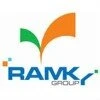Filter interviews by
Ramky Infrastructure Interview Questions and Answers
45 Interview questions
The minimum time for concrete to gain strength is typically 28 days.
Concrete typically gains strength over time, with significant strength achieved after 28 days.
Factors such as mix design, curing conditions, and environmental factors can affect the rate of strength gain.
Testing is often done at various intervals to monitor the strength development of concrete.
Early strength concrete mixes are available for projec...
Footing is a structural element that transfers building loads to the ground, ensuring stability and support for structures.
Footings are typically made of concrete and are placed below the ground level.
They distribute the weight of the structure over a larger area to prevent settling.
Common types of footings include spread footings, strip footings, and mat foundations.
For example, a spread footing is used for indiv...
Some of the biggest challenges civil engineers face include managing project budgets, dealing with unexpected site conditions, and ensuring compliance with regulations.
Managing project budgets effectively to avoid cost overruns
Dealing with unexpected site conditions such as soil instability or environmental hazards
Ensuring compliance with regulations and obtaining necessary permits
Balancing the needs of various st...
Embedded length is the length of reinforcement bar embedded in concrete, while development length is the length required for the bar to transfer its load to the concrete.
Embedded length is the portion of the reinforcement bar that is embedded in concrete to provide structural support.
Development length is the length of reinforcement required for the bar to transfer its load to the concrete without slippage.
Embedde...
The minimum development length in a column is the length required for the full transfer of stress from the steel reinforcement to the concrete.
The minimum development length is typically specified by design codes or standards.
It is influenced by factors such as the diameter of the reinforcement, concrete strength, and bond characteristics.
For example, in ACI 318, the minimum development length for a #5 bar is 12 i...
Anchorage of reinforcing bars refers to the method of securing the bars in concrete to ensure proper transfer of forces.
Anchorage length is the portion of the reinforcing bar embedded in concrete to transfer forces effectively.
Proper anchorage is crucial for the structural integrity of the concrete element.
Anchorage can be achieved through hooks, bends, or mechanical anchorage devices.
Development length is the min...
IS Code 1200 Part 1 is used for quantity survey for earth work.
IS Code 1200 Part 1 provides guidelines for measurement and billing of earthwork in civil engineering projects.
It includes methods for calculating quantities of excavation, backfilling, and earthwork in embankments.
The code also covers specifications for the preparation of bills of quantities for earthwork.
Engineers and contractors refer to IS Code 120...
Our plant follows strict safety protocols, efficient workflow procedures, and regular maintenance schedules.
We have daily safety meetings to discuss potential hazards and ensure compliance with safety regulations.
Our workflow procedures are designed to maximize efficiency and productivity, with regular reviews to identify areas for improvement.
We have a comprehensive maintenance schedule in place to prevent breakd...
The capacity of a Water Treatment Plant (WTP) is measured in million gallons per day (mgd).
WTP capacity is the maximum amount of water that can be treated and supplied per day.
It is an important factor in determining the water supply capability of a WTP.
Capacity can vary depending on the size and design of the plant.
For example, a WTP may have a capacity of 10 mgd, meaning it can treat and supply up to 10 million ...
The process of a Water Treatment Plant (WTP) involves several stages to purify water for safe consumption.
Coagulation and Flocculation: Chemicals are added to water to remove suspended particles.
Sedimentation: The water is allowed to settle, and the solids are removed.
Filtration: Water passes through various filters to remove smaller particles.
Disinfection: Chlorine or other disinfectants are added to kill harmful...
Ramky Infrastructure Interview Experiences
46 interviews found
I appeared for an interview in Nov 2024.
(2 Questions)
- Q1. : What are some of the biggest challenges civil engineers face?
- Ans.
Some of the biggest challenges civil engineers face include managing project budgets, dealing with unexpected site conditions, and ensuring compliance with regulations.
Managing project budgets effectively to avoid cost overruns
Dealing with unexpected site conditions such as soil instability or environmental hazards
Ensuring compliance with regulations and obtaining necessary permits
Balancing the needs of various stakeho...
- Q2. What is your favorite role on a project team? How do you react to a task you're not sure how to approach?
What is the colume
The vertical part of the building and base of the slab, distribution of load
(2 Questions)
- Q1. What is the footing
- Q2. The base of the building
I applied via Walk-in and was interviewed before Apr 2021. There was 1 interview round.
(3 Questions)
- Q1. Explain anchorage of reinforcing bars?
- Ans.
Anchorage of reinforcing bars refers to the method of securing the bars in concrete to ensure proper transfer of forces.
Anchorage length is the portion of the reinforcing bar embedded in concrete to transfer forces effectively.
Proper anchorage is crucial for the structural integrity of the concrete element.
Anchorage can be achieved through hooks, bends, or mechanical anchorage devices.
Development length is the minimum ...
- Q2. What is the minimum development length in a column?
- Ans.
The minimum development length in a column is the length required for the full transfer of stress from the steel reinforcement to the concrete.
The minimum development length is typically specified by design codes or standards.
It is influenced by factors such as the diameter of the reinforcement, concrete strength, and bond characteristics.
For example, in ACI 318, the minimum development length for a #5 bar is 12 inches...
- Q3. What is embedded length and development length?
- Ans.
Embedded length is the length of reinforcement bar embedded in concrete, while development length is the length required for the bar to transfer its load to the concrete.
Embedded length is the portion of the reinforcement bar that is embedded in concrete to provide structural support.
Development length is the length of reinforcement required for the bar to transfer its load to the concrete without slippage.
Embedded len...
I appeared for an interview in Apr 2025, where I was asked the following questions.
- Q1. Previous job experience
- Ans.
I have extensive experience managing lab operations, ensuring compliance, and leading teams to achieve research goals effectively.
Managed a team of 10 in a high-throughput lab environment, improving efficiency by 20%.
Implemented new safety protocols that reduced incidents by 30%.
Oversaw the procurement of lab equipment, negotiating contracts that saved the department 15%.
Led a project on sample analysis that resulted i...
- Q2. Job role and work
- Q3. Additional learning
- Q1. Safety Related questions
- Q2. Operation & Project Related
- Q3. EHS Documents HIRA, AIR, Observation, LTI, Report Checklist, Training etc. Mechanical Electrical Instrumentation Boilers RO Raw water
- Q4. Many times of safety questions
Interview Preparation Tips
(2 Questions)
- Q1. Types of construction hazards
- Ans.
Construction hazards include falls, electrical hazards, struck-by hazards, caught-in/between hazards, and hazardous materials.
Falls from heights
Electrical hazards
Struck-by hazards (e.g. falling objects)
Caught-in/between hazards (e.g. machinery)
Hazardous materials exposure
- Q2. Types of trip&fall hazards
- Ans.
Trip and fall hazards include uneven surfaces, cluttered walkways, poor lighting, and slippery floors.
Uneven surfaces such as cracked sidewalks or loose floor tiles
Cluttered walkways with obstacles like cables or boxes
Poor lighting in dimly lit areas
Slippery floors from spills or wet surfaces
(1 Question)
- Q1. What is the minimum time of concrete getting strength
I applied via Approached by Company and was interviewed in Mar 2024. There was 1 interview round.
(2 Questions)
- Q1. Explain overall plant process and controlling and setpoint ( Temperature, Pressure, Level, start-up and Shutdown procedure.
- Ans.
The overall plant process involves controlling temperature, pressure, and level through setpoints, along with following specific start-up and shutdown procedures.
The plant process involves various unit operations such as mixing, reaction, separation, and purification.
Temperature, pressure, and level are controlled using instruments like thermocouples, pressure transmitters, and level sensors.
Setpoints are predetermined...
- Q2. DCS operation work and Responsibilities.
- Ans.
DCS operation involves monitoring and controlling processes through a centralized control system.
Monitoring process parameters
Adjusting control setpoints
Responding to alarms and abnormalities
Performing routine maintenance on DCS equipment
Troubleshooting system issues
Collaborating with other operators and engineers
Interview Preparation Tips
I applied via Walk-in and was interviewed in Oct 2023. There were 2 interview rounds.

(3 Questions)
- Q1. What are the responsibility of Quality Control..? Do you know the QAP and QMP..? How to prevent Leakage..? What precautions to take water proofing..? What are the codes used to Mix Design..? What is meant ...
- Ans.
The responsibilities of Quality Control include ensuring product quality, following QAP and QMP, preventing leakage, taking precautions for waterproofing, using codes for mix design, understanding self compact concrete, and being familiar with Mivan Shuttering.
Ensuring product quality
Following Quality Assurance Plan (QAP) and Quality Management Plan (QMP)
Preventing leakage
Taking precautions for waterproofing
Using codes...
- Q2. What are the details of Documentation and explain briefly
- Q3. What are the differences between FE 500 And FE 500D steel
Interview Preparation Tips
- Concrete
- Soils
- Mix design

(1 Question)
- Q1. What is your Carrent salary?
(2 Questions)
- Q1. What is the process of WTP Plant .?
- Q2. What is capacity of WTP in mgd?
- Ans.
The capacity of a Water Treatment Plant (WTP) is measured in million gallons per day (mgd).
WTP capacity is the maximum amount of water that can be treated and supplied per day.
It is an important factor in determining the water supply capability of a WTP.
Capacity can vary depending on the size and design of the plant.
For example, a WTP may have a capacity of 10 mgd, meaning it can treat and supply up to 10 million gallo...
(2 Questions)
- Q1. Salary discussion
- Q2. What is your joining date..?
(1 Question)
- Q1. What is your Notice period
Top trending discussions






Ramky Infrastructure Interview FAQs
The duration of Ramky Infrastructure interview process can vary, but typically it takes about less than 2 weeks to complete.
Tell us how to improve this page.
Ramky Infrastructure Interviews By Designations
- Ramky Infrastructure Assistant Manager Interview Questions
- Ramky Infrastructure Senior Engineer Interview Questions
- Ramky Infrastructure Civil Engineer Interview Questions
- Ramky Infrastructure Graduate Engineer Trainee (Get) Interview Questions
- Ramky Infrastructure Senior Manager Interview Questions
- Ramky Infrastructure Engineer Interview Questions
- Ramky Infrastructure Assistant Manager/Manager -(Technical) Interview Questions
- Ramky Infrastructure Project Engineer Interview Questions
- Show more
Interview Questions for Popular Designations
Overall Interview Experience Rating
based on 57 interview experiences
Difficulty level
Duration
Interview Questions from Similar Companies
Ramky Infrastructure Reviews and Ratings
based on 617 reviews
Rating in categories
|
Engineer
110
salaries
| ₹2.2 L/yr - ₹5 L/yr |
|
Assistant Manager
97
salaries
| ₹4 L/yr - ₹9 L/yr |
|
Senior Engineer
82
salaries
| ₹3.5 L/yr - ₹7.6 L/yr |
|
Deputy Manager
63
salaries
| ₹5.9 L/yr - ₹12 L/yr |
|
Senior Assistant Manager
59
salaries
| ₹5.1 L/yr - ₹10.3 L/yr |

L&T Construction

Simplex Infrastructures

ITD Cementation India

Ashoka Buildcon
- Home >
- Interviews >
- Ramky Infrastructure Interview Questions














